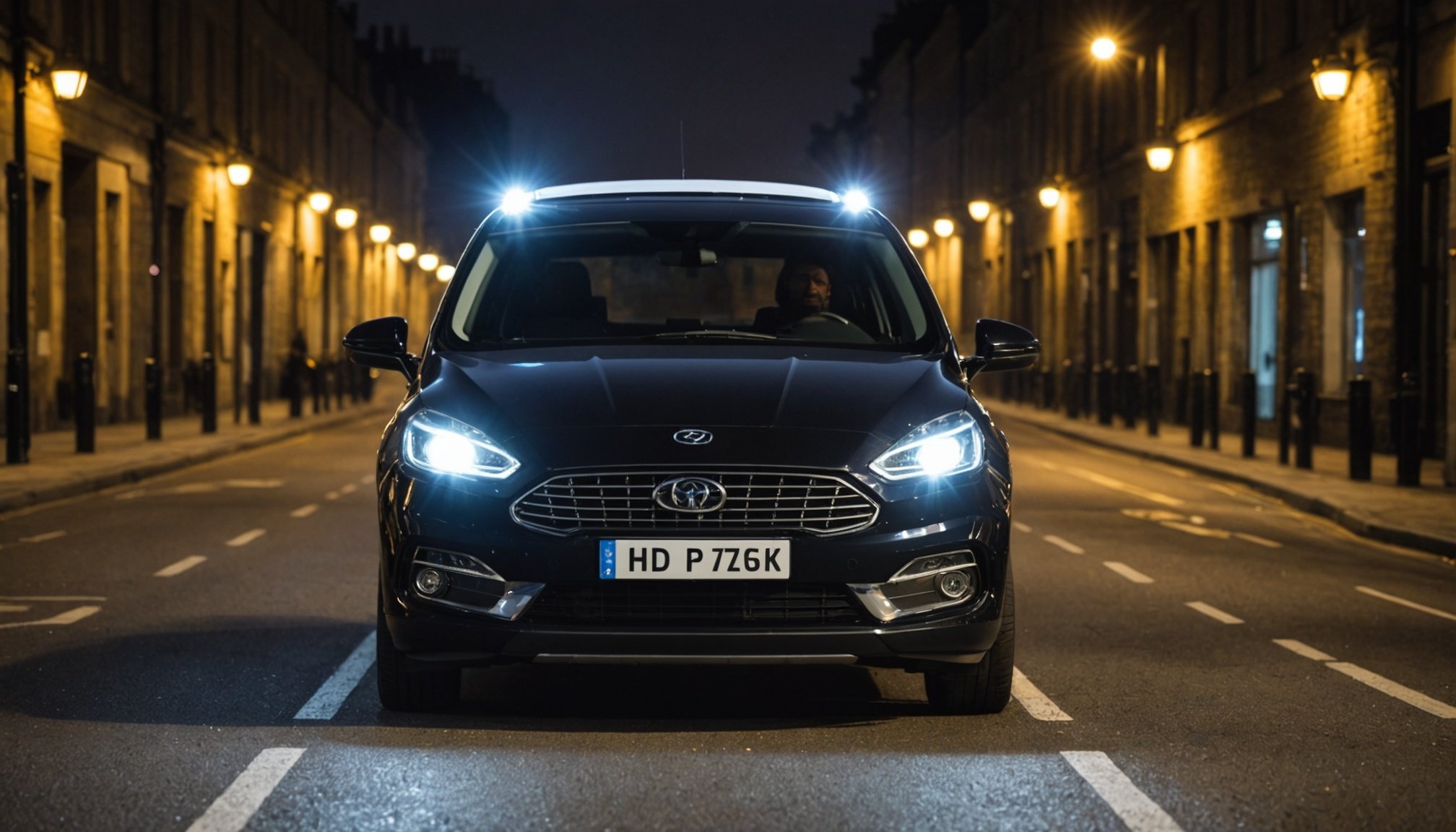Automotive lighting has evolved significantly over the years. The traditional halogen bulbs have now given way to more advanced lighting technologies like LEDs and xenon lights. LEDs, in particular, are becoming increasingly popular as the go-to upgrade for headlight bulbs in UK cars. As you prepare to make this essential upgrade to your vehicle, it’s crucial to understand the benefits that LEDs bring over halogen lights. In this article, we delve into the advantages of LED over halogen lights for UK cars, with an eye on energy efficiency, road safety, and vehicle aesthetics.
Enhanced Energy Efficiency with LED Lighting
LED (Light Emitting Diode) bulbs have taken the automotive world by storm, primarily due to their superior energy efficiency. LEDs are semiconductors that emit light when current flows through them. This process is more energy-efficient than the incandescent reaction that occurs in halogen bulbs, where a lot of heat is lost.
Also to read : How to choose the right battery for your British electric car?
Unlike halogen lights, LEDs transform nearly all their energy into light. This means that LED headlights will use considerably less power from your car’s electrical system than halogen bulbs. Consequently, this will lower the burden on your vehicle’s alternator and can even result in minor fuel savings over time. Moreover, the efficient energy conversion of LEDs also results in bulbs that generate less heat. This contributes to greater longevity, reducing the frequency and cost of bulb replacements.
Superior Road Illumination with LED Headlights
Another key advantage of LED over halogen headlights lies in the quality of light they emit. LED headlights produce a pure, bright, and white light similar to daylight. This type of light significantly enhances visibility on the road, particularly at night or in low-light conditions.
In parallel : What are the most effective ways to protect your UK car’s paint from bird droppings?
The colour of light produced by LED bulbs is measured in Kelvin (K). LEDs typically produce light in the 5000K to 6000K range, which is near the colour temperature of daylight (around 5500K to 6500K). This colour temperature is easier on the human eye compared to the yellowish light (around 3000K) produced by halogen bulbs.
In addition to the superior light quality, LED headlights also have an excellent beam pattern. This ensures that the light is distributed evenly on the road, eliminating dark spots that can compromise visibility.
LEDs Contribute to Enhanced Vehicle Aesthetics
LEDs are not just practical and energy-efficient; they also contribute to the aesthetic value of your vehicle. With their sleek and compact design, LEDs can be shaped into flexible designs that enhance the overall look of the vehicle.
The sharp, bright light emitted by the LED headlights gives your car an up-to-date, high-tech appearance. LED lights also light up instantaneously unlike halogen bulbs which take a few moments to reach full brightness. This instant-on capability not only improves safety but also adds an appealing visual effect to your vehicle.
LED Lights are More Durable Than Halogen Bulbs
Durability is another area where LED lights outshine halogen bulbs. LED headlights are solid-state lights, meaning they are incredibly rugged and can withstand conditions that would damage traditional halogen bulbs. LEDs can handle shock, vibration, and extreme temperature changes much better than halogen bulbs.
LED bulbs also have a longer operational life than halogen bulbs. While the average lifespan of a halogen bulb is about 1,000 to 2,000 hours, LED bulbs can last up to 50,000 hours. This means less frequent bulb changes, saving you both time and money in the long run.
Safety Aspects of LED Headlights
Finally, LED headlights play an essential role in enhancing road safety. The superior lighting quality, greater visibility, and instantaneous lighting of LEDs contribute significantly to safer driving conditions.
The bright and broad beam of LED lights ensures drivers can see and be seen from a distance. This increases reaction times in case of unexpected obstacles or situations on the road. Furthermore, the instant-on capability of LEDs means that brake lights and indicators are seen more rapidly by other road users, providing a crucial additional margin of safety.
In conclusion, switching to LED headlights from halogen bulbs offers benefits that go beyond energy savings and better lighting. The advantages of durability, aesthetics, and most importantly, safety make LED lights an excellent upgrade for your vehicle. As the automotive industry continues to evolve, LEDs are set to become the light type of choice for UK cars in the near future.
LED Lights vs Halogen: A Comparison of Costs
When it comes to the cost of LED headlights and halogen bulbs, it’s important to consider both the initial purchase price and long-term expenses. Regarding the purchase price, halogen bulbs tend to be cheaper than LED lights. However, this initial saving can be eclipsed by the longer-term costs associated with halogen headlights.
Firstly, as mentioned earlier, LED headlights are more energy efficient than halogen bulbs. This can lead to fuel savings which, over the lifetime of your car, can add up to a significant amount. Furthermore, LED lights generate less heat than halogen bulbs, reducing the risk of heat-related damage to your vehicle’s headlight assembly and potentially costly repairs.
Secondly, the durability of LED bulbs also plays a key role in their cost-effectiveness. With an average lifespan of up to 50,000 hours, compared to the 1,000-2,000 hours of a halogen bulb, LED headlights require less frequent replacements. This not only saves on the cost of the bulbs themselves but also on the labour costs associated with bulb replacements.
In summary, while LED headlights may have a higher initial cost, they can prove to be a more economical choice in the long run due to their energy efficiency and extended lifespan.
The Environmental Impact of Switching to LED Headlights
Beyond the obvious benefits of LED headlights such as improved visibility, aesthetics, and longevity, there’s another crucial advantage to consider: the positive impact on the environment. As we’re becoming increasingly aware of our carbon footprint and the need to use energy more efficiently, the role of LED lights in reducing energy consumption becomes more pronounced.
LED headlight bulbs are more energy efficient than halogen lights, which means they consume less electricity. This results in lower carbon emissions from your vehicle, which contributes to reducing your carbon footprint.
Moreover, the longer lifespan of LED lights also has environmental benefits. A longer-lasting bulb means fewer replacements, which in turn leads to less waste. The use of durable, long-lasting LED headlights helps to reduce the amount of electronic waste that ends up in landfills, contributing to a more sustainable and eco-friendly automotive industry.
Conclusion: Making the Switch to LED Headlights
The advantages of switching from halogen bulbs to LED headlights for UK cars are clear. The outstanding energy efficiency, superior light output, improved vehicle aesthetics, remarkable durability, and enhanced safety features make LEDs an excellent choice for any vehicle.
The added benefits of cost-effectiveness and environmental friendliness further strengthen the case for LEDs. While the initial investment might be higher, the long-term savings and the contribution to a more sustainable future make it a worthwhile upgrade.
As technology continues to evolve and the automotive industry strives towards more sustainable solutions, LED lights are set to become the standard for car lighting in the UK and beyond. So why wait to enjoy the benefits of brighter, whiter light, and improved energy efficiency? Switch to LED headlights today and drive into a brighter and greener future.











